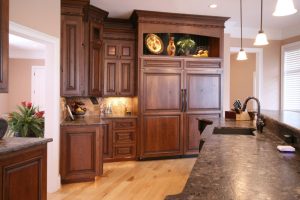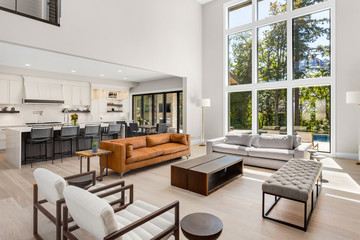
Having well-groomed landscaping can increase the overall look and feel of your property. However, it is important to avoid making common mistakes that can throw off the entire project.
It’s tempting to pack in plants or put them too close together, not realizing how much they will grow. Always plan for the future and give your landscape room to expand without blocking views or crowding walkways. Contact Oahu Landscaping Services for more details.
Not Taking Care of Your Plants
A beautiful landscape needs regular maintenance, including pruning and watering. However, many homeowners jump into landscaping without a plan and find themselves overwhelmed by the upkeep. We recommend that you take the time to research plants before purchasing, and then design with their needs in mind. For example, shrubs that need to be pruned regularly can be grouped together in accessible areas of your yard rather than spread out throughout your landscape. Also, choose perennials and ornamental grasses that offer year-round color to reduce the amount of work you need to do in your yard.
Another common mistake that leads to overgrown gardens is planting too deep. Overly deep plantings can suffocate the roots of your new flowers or plants, causing them to grow weakly and eventually die. To avoid this, always check the recommended planting depth for each plant and follow it.
In addition to planting too deep, we often see homeowners planting too close to their home or walkways. This causes the plants to eventually overtake the space and block windows or walkways. To avoid this, we recommend that you look up the mature height and width of each plant before purchasing it and then draw a rough plan for where each one will go to make sure they will fit into your landscape when they are fully grown.
We also see homeowners overlooking the different seasons when designing their yards. By focusing only on spring and summer blooms, they end up with a yard that is bare or unattractive in fall and winter. To keep your yard looking great all year, add evergreen shrubs to your design and use colorful accent plants like dogwoods and oakleaf hydrangeas to bring in fall and winter color.
Not Creating a Maintenance Plan
It is easy to get carried away with elaborate beds, new plants and other features that will make your landscape beautiful – but all of these things require regular care. When you don’t have a plan in place, your landscaping can quickly become a never-ending to-do list that you don’t have time for. To avoid this mistake, create a maintenance plan before you start planting. This will help you figure out what needs to be done on a weekly, monthly or quarterly basis to keep your garden looking its best.
Another mistake that many people make is not considering how their landscape will look in different seasons. When planning out your landscape, be sure to include plants that thrive in each season. This will ensure that your garden looks great all year round!
You also want to be sure that you are using plants that can grow in your specific climate and soil type. Not doing so can lead to a landscape that doesn’t thrive and can result in wasted money, time and effort.
Finally, it is important to regularly prune your shrubs. This will not only keep them healthy and aesthetically pleasing, but it will also help to prevent overgrowth and weeds. Make sure to use a good pair of shears or hedge clippers to prune your shrubs and be sure to do it often!
Lastly, don’t forget to cover up unsightly spots like utility boxes, hoses and other equipment. Doing so will ensure that your landscape is always looking its best and will prevent it from becoming a cluttered mess.
Not Taking the Time to Consider Your Colors
If you don’t take your color palette into account, your landscaping can end up looking drab and uninteresting. It’s important to use a range of colors, from soft pastels to brighter hues, in order to create a more appealing and balanced look. Using a combination of colors will also help to bring out the details in your plants and create contrast.
Another mistake that many homeowners make is not taking into account how their landscape will look from different angles. It’s important to think about how your garden looks from the front, back, and sides in order to ensure that it is appealing from all areas. For example, if you have an ugly planter that is visible from the road, it might be a good idea to cover it up with some attractive trellis work or flower boxes.
Not using enough focal points in your garden can also be a big mistake. Focal points add visual interest to your garden by drawing attention to certain areas. Adding eye-catching plants, unique shapes, and even statues and bird baths can be a great way to create a focal point in your garden.
Another common mistake is not using enough evergreens in your garden. Evergreens give your yard structure and color throughout the year, which can be a real boost to your curb appeal. If you don’t use enough evergreens, your garden can start to look bare and “naked” in the winter.
Landscaping is an art, and it takes a lot of time and planning to get it right. By avoiding these common mistakes, you can ensure that your yard is healthy and beautiful all year round!
Not Choosing the Right Furniture
Not taking the time to choose the right furniture for your landscape can make a big difference in how your yard looks. You want to ensure that the furniture you choose is a good fit both size-wise and color-wise. In addition, you’ll also want to consider things like maintenance and weather resistance.
Another mistake homeowners often make is picking the wrong fence for their landscape. This can lead to problems because your fence may not match the rest of your design or it might be in the way when you’re working on other areas of your garden.
It’s also important to keep in mind that your fence should be wildlife-proof as well. This means making sure that it’s not close to any plants that wildlife would be attracted to and that it’s not blocking any entrances to your house or shed.
Lastly, it’s important to regularly prune your shrubs. This helps them stay healthy and looking their best, and it can also add a nice design element to your landscape. If you don’t prune your shrubs, they can look unkempt and unattractive.
Finally, remember to always recycle any organic and inorganic materials that you use for your landscaping. This helps to save money and reduce waste in the environment.
Not Lighting Up Your Yard
A well-lit yard is a key component to a great landscape design. Without it, your yard can look dark and uninviting after the sun goes down. Moreover, it can also be dangerous to walk in after dark, making your property less safe for you and your family.
Another common landscaping mistake is forgetting to put in eye-catching focal points. Focal points are a great way to draw attention to specific areas of your yard, but they can also help your garden look more visually interesting and balanced.
In addition, it’s important to avoid overusing lawn chemicals. While they may seem like a quick and easy solution to pesky weeds or insect infestations, these chemicals can be very harmful to your lawn and the environment. It’s best to invest in a quality lawn care program instead.
Finally, it’s important to keep in mind that a landscape is meant to be enjoyed year-round. Many homeowners focus on planting spring and summer blooms, but forget that their landscape will be visible in the fall and winter as well. To make your yard more attractive throughout the year, consider adding some evergreen shrubs and ornamental grasses to provide texture and interest in the winter. Also, add some plants with staggered bloom times to ensure that your yard has something in flower at all seasons.
By avoiding these common mistakes, you can ensure that your landscaping project will be a success. So, whether you’re planning on giving your home a makeover or are just starting out, be sure to take these tips into consideration! With a little bit of planning, you can create a landscape that will not only be beautiful but will last for years to come.



